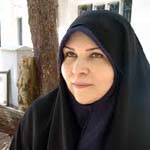Decoding the Iranian Animation Series “The children of Gol-ha Building” in Representation of Parent-Children Relationships (Based on John Fiske’s Codes)
Author(s):
Article Type:
Research/Original Article (دارای رتبه معتبر)
Abstract:
Considering the importance of the family foundation in Iranian-Islamic culture, as well as the interest of children in watching animation, determining the represented characteristics and ideological codes of animations is necessary because the type of language used to express any topic can change its meaning. The aim of this research is semiotic analysis of the represented patterns of parent-children relationships and deciphering the prevailing ideological codes in the animation series "The Children of Gol-ha Building". The research method is determining content codes in three levels of appearance, technical and ideological which is based on John Fisk's semiotic method. All the episodes of this animation series were selected as the statistical population and then, detailed analysis was done on 12 episodes related to the research. The results of the research show that according to John Fiske's semiotic analysis of codes, the relationships between parents and children in the Iranian-Islamic lifestyle is a mutual fundamental relationship based on common values and the creators of this animation series have institutionalized many ideological implications about parent-children relationships based on Iranian-Islamic culture and their intended culture and goals.
Keywords:
Language:
Persian
Published:
Scientific Journal of Audio - Visual Media, Volume:17 Issue: 46, 2023
Pages:
5 to 30
https://www.magiran.com/p2625939
سامانه نویسندگان
مقالات دیگری از این نویسنده (گان)
-
Explanation of the Problem-Solving Process in the Interactive Computer Games "Children of Morta" and "Legacy of the Guardians of Light" from John Dewey’s Perspective
Maryam Sheikhzadeh *,
Journal of Jelve-y Honar, Spring 2025 -
Revitalizing the Art of Persian Miniature Painting in the Urban Landscape and the Function of Citizens' Cultural Capital
Zohreh Taher,
Paykareh, Spring 2025


